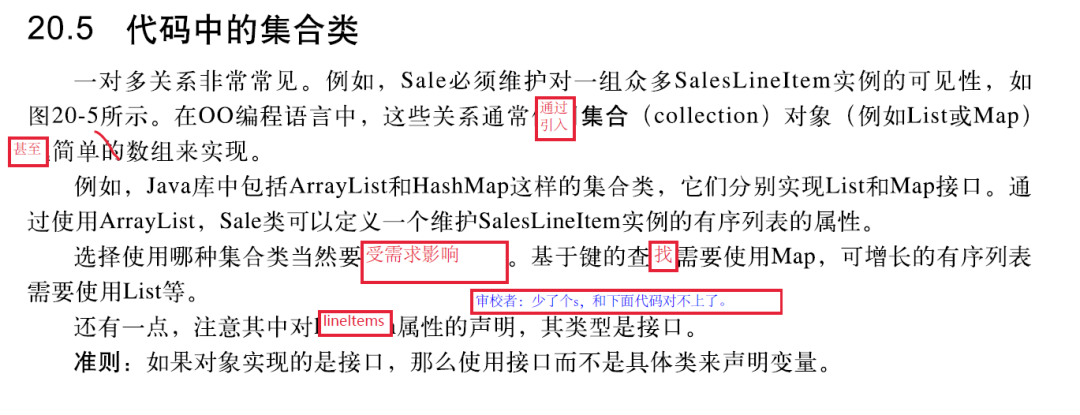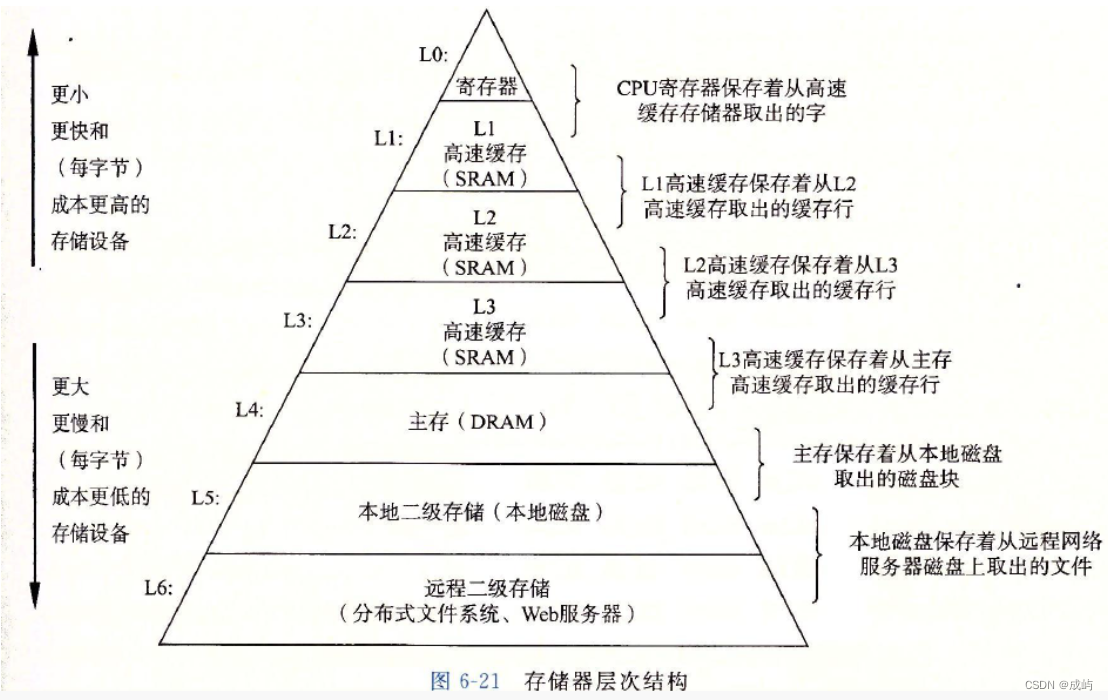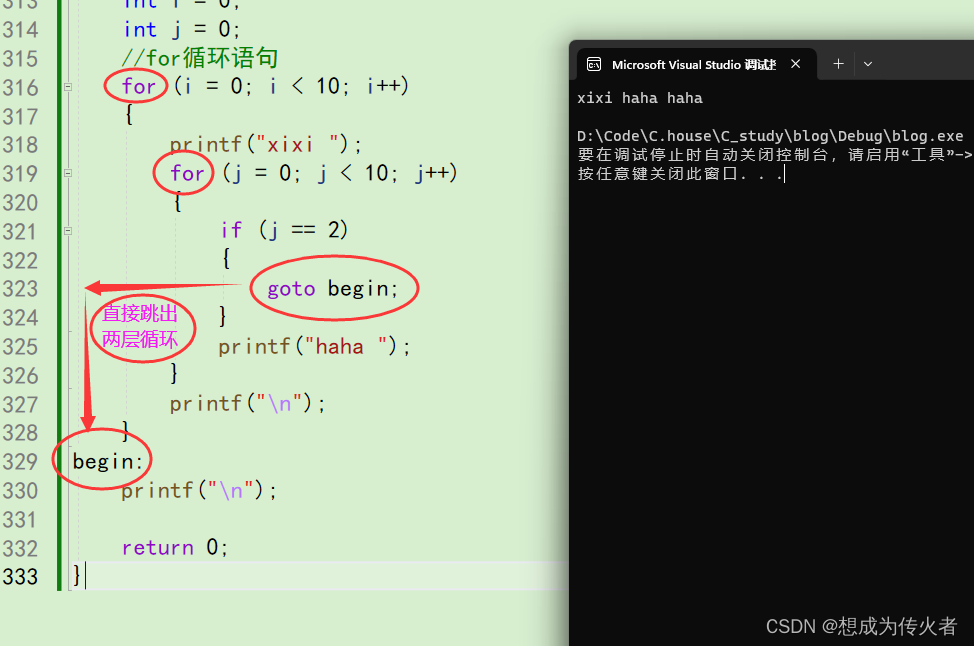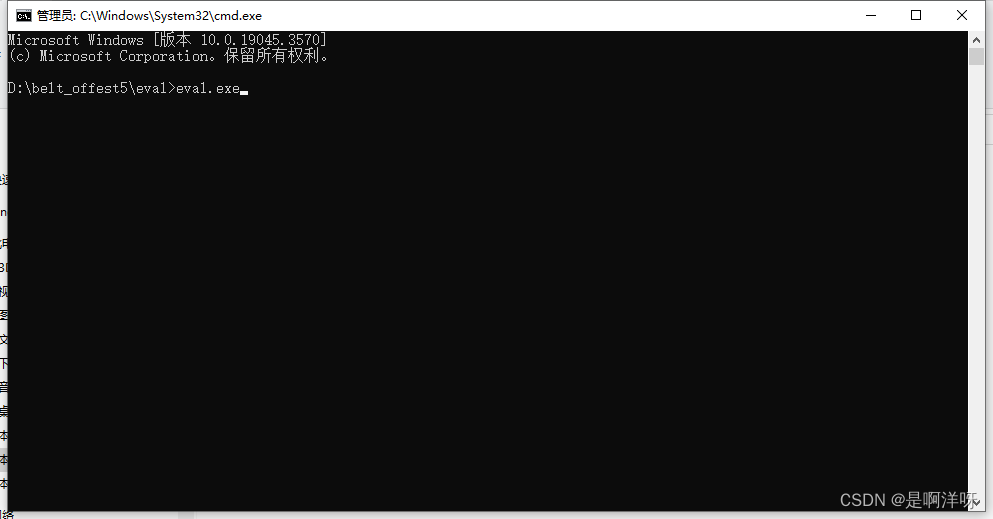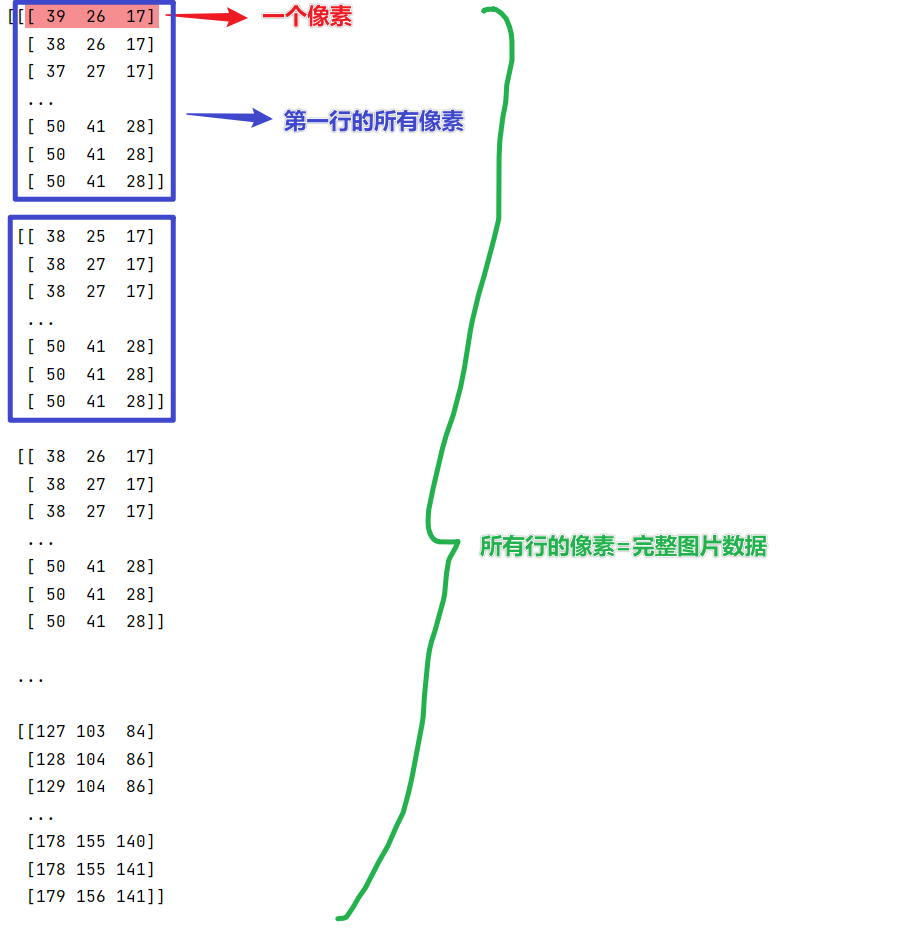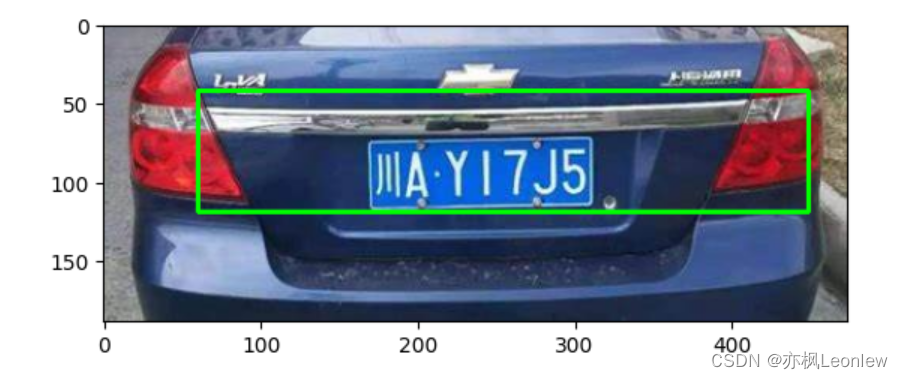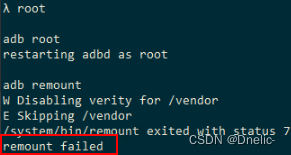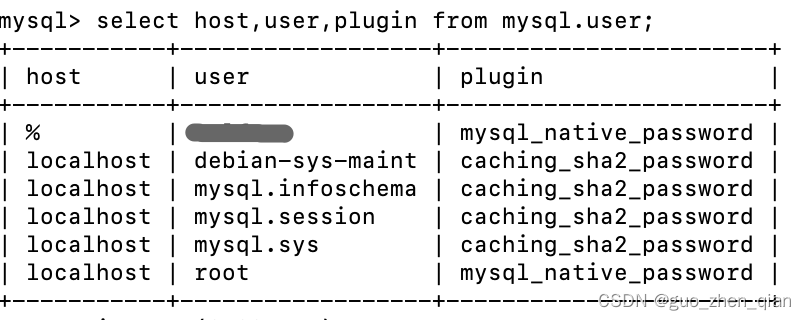堆的实现源码
#define _CRT_SECURE_NO_WARNINGS
#include <stdio.h>
#include <stdlib.h>
#include <time.h>
#include <stdbool.h>
#include <assert.h>
typedef struct Heap
{
int* a;
int size;
int capacity;
}Heap;
void HeapInit(Heap* st)
{
st->a = NULL;
st->capacity = 0;
st->size = 0;
}
void swap(int* str1, int* str2)
{
int tmp = *str1;
*str1 = *str2;
*str2 = tmp;
}
void Adjustup(int* a, int child)
{
int parent = (child - 1) / 2;
while (child > 0)
{
if (a[child] < a[parent])
{
swap(&a[child], &a[parent]);
child = parent;
parent = (child - 1) / 2;
}
else
{
break;
}
}
}
void HeapPush(Heap* st, int x)
{
if (st->capacity == st->size)
{
int newcapcity = st->capacity == 0 ? 4 : st->capacity * 2;
int* tmp = (int*)realloc(st->a, newcapcity * sizeof(int));
if (tmp == NULL)
{
perror("realloc fail");
}
st->a = tmp;
st->capacity = newcapcity;
}
st->a[st->size] = x;
st->size++;
Adjustup(st->a, st->size - 1);
}
void Heapprint(Heap* st)
{
for (int i = 0; i < st->size; i++)
{
printf("%d ", st->a[i]);
}
}
void AdjustDown(int* a, int n, int parent)
{
int child = parent * 2 + 1;
while (child < n)
{
if (child + 1 < n && a[child + 1] < a[child])
{
child++;
}
if (a[child] < a[parent])
{
swap(&a[child], &a[parent]);
parent = child;
child = parent * 2 + 1;
}
else
{
break;
}
}
}
bool HeapEmpty(Heap* st)
{
assert(st);
if (st->size == 0)
{
return true;
}
else
{
return false;
}
}
int HeapSize(Heap* st)
{
assert(st);
return st->size;
}
void HeapPop(Heap* hp)
{
assert(hp);
assert(!HeapEmpty(hp));
swap(&hp->a[0], &hp->a[hp->size - 1]);
hp->size--;
AdjustDown(hp->a, hp->size, 0);
}
void HeapDestroy(Heap* st)
{
assert(st);
free(st->a);
st->a = NULL;
st->size = 0;
st->capacity = 0;
}
int HeapTop(Heap* st)
{
assert(st);
assert(!HeapEmpty(st));
return st->a[0];
}
使用堆结构实现堆排序
void HeapSort(int* a, int n)
{
Heap hp;
HeapInit(&hp);//初始化堆
for (int i = 0; i < 10; i++)
{
HeapPush(&hp, a[i]);//堆中插入元素,每次插入做向上调整.保证堆是小堆
}
while (!HeapEmpty(&hp))//如果堆不为空的话
{
int top=HeapTop(&hp);//每次取堆顶数据为最小
printf("%d ", top);
HeapPop(&hp);//删除堆顶元素时,重新调整堆,使其还是小堆
}
}
主函数
int main()
{
int arr[10] = { 52,85,74,46,23,14,65,25,32,78 };
HeapSort(arr, 10);
}
编译运行
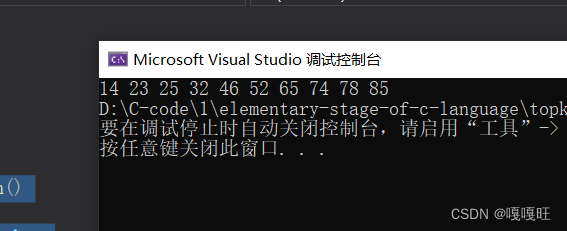
如果用上述方法写堆的话,还必须写一个堆的结构,特别麻烦.
排序方法2
1.排列升序
我们可以直接使用向上调整和向下调整建堆,实质上的堆只是数组,向上调正和向下调整只是操作下标而已.
排列升序我们应该创建大堆还是小堆,如果不仔细想一想的话,可能是创建一个小堆,然后依次取对顶元素,但是如果依次取堆顶元素的话,剩下的元素就不能构成一个堆,堆的关系就全乱了.如下图所示.取出堆顶的小元素.重新排列的话.
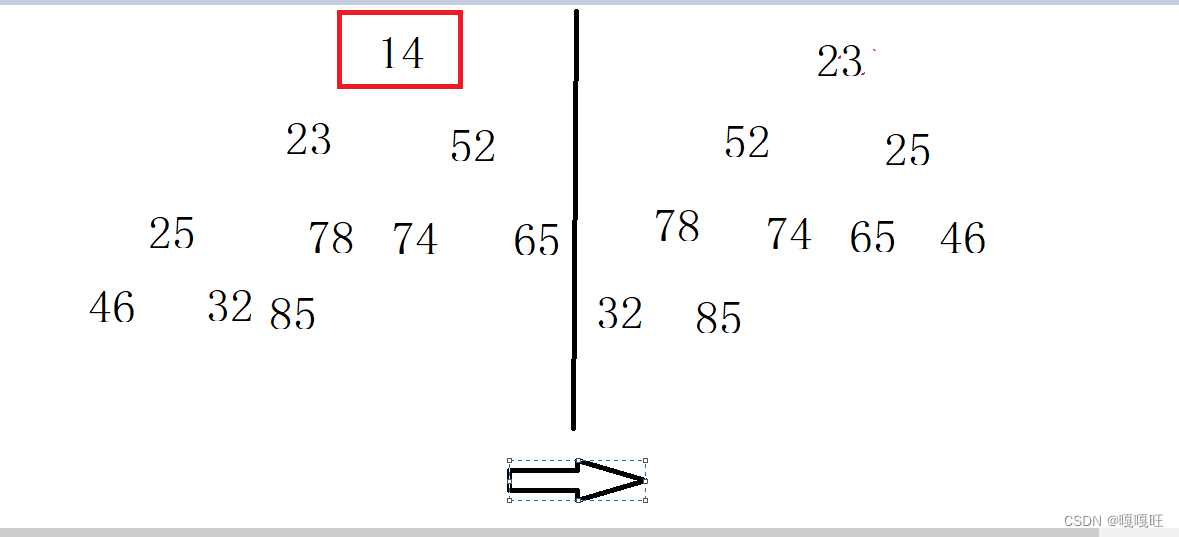
因此我们如果要排升序的话,就创建大堆,我们既可以用向上调整创建大堆,也可以用向下调整创建大堆
向下调整创建大堆
void AdjustDown(int* a, int n, int parent)
{
int child = parent * 2 + 1;
while (child < n)
{
if (child + 1 < n && a[child + 1] >a[child])//这里要选大的孩子和父亲交换
{
child++;
}
if (a[child] >a[parent])//比父亲大的孩子向上走.
{
swap(&a[child], &a[parent]);
parent = child;
child = parent * 2 + 1;
}
else
{
break;
}
}
}
void HeapSort(int* a, int n)
{
Heap hp;
for (int i = (n - 1 - 1) / 2; i >=0; --i)//从最后一个非子叶节点开始走.直到堆顶的元素
{
AdjustDown(a, n, i);
}
}
int main()
{
Heap hp;
//createdata();
//printtopK(10);
int arr[10] = { 52,85,74,46,23,14,65,25,32,78 };
HeapSort(arr, 10);
for (int i = 0; i < 10; i++)
{
printf("%d ", arr[i]);
}
}
向上调整创建大堆
void Adjustup(int* a, int child)
{
int parent = (child - 1) / 2;
while (child > 0)
{
if (a[child] > a[parent])
{
swap(&a[child], &a[parent]);
child = parent;
parent = (child - 1) / 2;
}
else
{
break;
}
}
}
void HeapSort(int* a, int n)
{
Heap hp;
for (int i = 1; i < n; i++)
{
Adjustup(a, i);
}
//for (int i = (n - 1 - 1) / 2; i >=0; --i)
//{
// AdjustDown(a, n, i);
//}
}
int main()
{
Heap hp;
//createdata();
//printtopK(10);
int arr[10] = { 52,85,74,46,23,14,65,25,32,78 };
HeapSort(arr, 10);
for (int i = 0; i < 10; i++)
{
printf("%d ", arr[i]);
}
}
创建的大堆
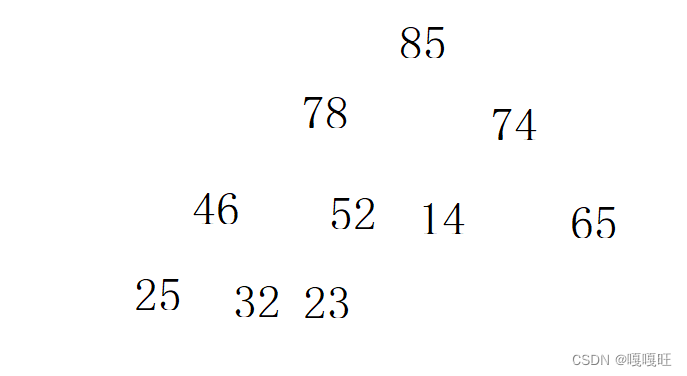
然后将创建好的大堆进行排序
修改后的堆排序
void HeapSort(int* a, int n)
{
Heap hp;
for (int i = (n - 1 - 1) / 2; i >=0; --i)
{
AdjustDown(a, n, i);
}
int end = n - 1;
while (end > 0)
{
swap(&a[0], &a[end]);
AdjustDown(a, end, 0);
--end;
}
}
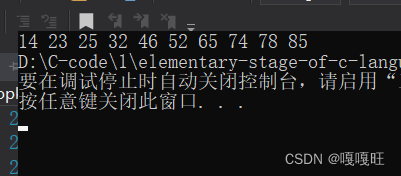
排降序
由排升序创建大堆,则排降序创建小堆,创建小堆既可以用向上调整法,还可以使用向下调整
向下调整创建小堆
void AdjustDown(int* a, int n, int parent)
{
int child = parent * 2 + 1;
while (child < n)
{
if (child + 1 < n && a[child + 1] <a[child])
{
child++;
}
if (a[child] <a[parent])
{
swap(&a[child], &a[parent]);
parent = child;
child = parent * 2 + 1;
}
else
{
break;
}
}
}
void HeapSort(int* a, int n)
{
Heap hp;
for (int i = (n - 1 - 1) / 2; i >=0; --i)
{
AdjustDown(a, n, i);
}
}
int main()
{
Heap hp;
//createdata();
//printtopK(10);
int arr[10] = { 52,85,74,46,23,14,65,25,32,78 };
HeapSort(arr, 10);
for (int i = 0; i < 10; i++)
{
printf("%d ", arr[i]);
}
}
向上调整创建小堆
void Adjustup(int* a, int child)
{
int parent = (child - 1) / 2;
while (child > 0)
{
if (a[child] < a[parent])
{
swap(&a[child], &a[parent]);
child = parent;
parent = (child - 1) / 2;
}
else
{
break;
}
}
}
void HeapSort(int* a, int n)
{
Heap hp;
for (int i = 1; i < n; i++)
{
Adjustup(a, i);
}
//for (int i = (n - 1 - 1) / 2; i >=0; --i)
//{
// AdjustDown(a, n, i);
//}
}
int main()
{
Heap hp;
//createdata();
//printtopK(10);
int arr[10] = { 52,85,74,46,23,14,65,25,32,78 };
HeapSort(arr, 10);
for (int i = 0; i < 10; i++)
{
printf("%d ", arr[i]);
}
}
将创建好的小堆进行排序
void Adjustup(int* a, int child)
{
int parent = (child - 1) / 2;
while (child > 0)
{
if (a[child] < a[parent])
{
swap(&a[child], &a[parent]);
child = parent;
parent = (child - 1) / 2;
}
else
{
break;
}
}
}
void HeapSort(int* a, int n)
{
Heap hp;
for (int i = 1; i < n; i++)
{
Adjustup(a, i);
}
//for (int i = (n - 1 - 1) / 2; i >=0; --i)
//{
// AdjustDown(a, n, i);
//}
int end = n - 1;
while (end > 0)
{
swap(&a[0], &a[end]);
AdjustDown(a, end, 0);
--end;
}
}
int main()
{
Heap hp;
//createdata();
//printtopK(10);
int arr[10] = { 52,85,74,46,23,14,65,25,32,78 };
HeapSort(arr, 10);
for (int i = 0; i < 10; i++)
{
printf("%d ", arr[i]);
}
}
总结:创建大堆或者小堆都可以用向上调整和向下调整,如果创建大堆对应的调整必须修改成孩子大于父亲进行交换,这样的话就可以把大数放在堆顶上.,如果创建小堆的话,孩子小于父亲的话,在进行交换,值得注意的是,创建大堆时,并且使用向下调整的话,需要将孩子的下标落在左右孩子较大的孩子身上.创建小堆时,需要将孩子的下标落在左右孩子较小的身上.
top-K问题
TOP-K问题:即求数据结合中前K个最大的元素或者最小的元素,一般情况下数据量都比较大。
比如:专业前10名、世界500强、富豪榜、游戏中前100的活跃玩家等。
对于Top-K问题,能想到的最简单直接的方式就是排序,但是:如果数据量非常大,排序就不太可取了(可能数据都不能一下子全部加载到内存中)。最佳的方式就是用堆来解决,基本思路如下:
- 用数据集合中前K个元素来建堆
前k个最大的元素,则建小堆
前k个最小的元素,则建大堆 - 用剩余的N-K个元素依次与堆顶元素来比较,不满足则替换堆顶元素将剩余N-K个元素依次与堆顶元素比完之后,堆中剩余的K个元素就是所求的前K个最小或者最大的元素。
找最大的10个
#define _CRT_SECURE_NO_WARNINGS
#include<stdio.h>
#include <stdlib.h>//srand头文件
#include <time.h>//time头文件
void swap(int* str1, int* str2)//交换两个数据的值
{
int tmp = *str1;
*str1 = *str2;
*str2 = tmp;
}
void AdjustDown(int* a, int n, int parent)
{
int child = parent * 2 + 1;
while (child < n)
{
if (child + 1 < n && a[child + 1] < a[child])
{
child++;
}
if (a[child] < a[parent])
{
swap(&a[child], &a[parent]);
parent = child;
child = parent * 2 + 1;
}
else
{
break;
}
}
}
void createdata()
{
int n = 10000;
srand((unsigned int)time(NULL));//产生随机数种子
FILE* fp = fopen("xa.txt", "w");//以写的方式打开文件
if (fp == NULL)
{
perror("fopen fail");
return;
}
for (int i = 0; i < 10000; i++)//产生10000个随机数,
{
int x = rand()%10000;//并且每一个随机数都是小于10000.
fprintf(fp,"%d\n",x);//将其写入文件中,并且换行
}
fclose(fp);
}
void printtopk(int k)
{
FILE* fp = fopen("xa.txt", "r");
if (fp == NULL)
{
perror("fopen fail");
return;
}
int* kminheap = (int*)malloc(sizeof(int) * k);//动态申请10个空间大小
if (kminheap == NULL)
{
perror("malloc fail");
}
for (int i = 0; i < k; i++)
{
fscanf(fp,"%d",&kminheap[i]);//先读取文件前10个数据
}
for (int i = (k - 1 - 1) / 2; i >= 0; i--)//向下调整为小堆,因为选最大的10个要排小堆
{
AdjustDown(kminheap, k, i);
}
int val = 0;
while (!feof(fp))//文件中剩下的数据需要与小堆中堆顶元素比较,如果大于堆顶元素,就把堆顶元素更新
{
fscanf(fp,"%d", &val);//读取文件中的数据到val中
if (val > kminheap[0])
{
kminheap[0] = val;
AdjustDown(kminheap, k,0);//比堆顶最小的大,就入堆,然后将堆顶元素向下调整,调整后,还需要保证是小堆。
}
}
for (int i = 0; i < k; i++)
{
printf("%d ", kminheap[i]);
}
}
int main()
{
createdata();
printtopk(10);
}
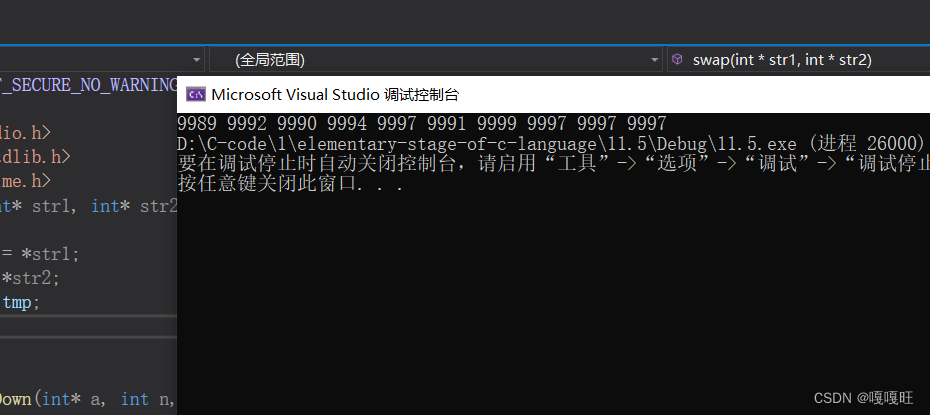
找最小的10个
需要创建大堆
#define _CRT_SECURE_NO_WARNINGS
#include<stdio.h>
#include <stdlib.h>
#include <time.h>
void swap(int* str1, int* str2)
{
int tmp = *str1;
*str1 = *str2;
*str2 = tmp;
}
void AdjustDown(int* a, int n, int parent)
{
int child = parent * 2 + 1;
while (child < n)
{
if (child + 1 < n && a[child + 1] > a[child])
{
child++;
}
if (a[child] > a[parent])
{
swap(&a[child], &a[parent]);
parent = child;
child = parent * 2 + 1;
}
else
{
break;
}
}
}
void createdata()
{
int n = 10000;
srand((unsigned int)time(NULL));
FILE* fp = fopen("xa.txt", "w");
if (fp == NULL)
{
perror("fopen fail");
return;
}
for (int i = 0; i < 10000; i++)
{
int x = rand()%10000;
fprintf(fp,"%d\n",x);
}
fclose(fp);
}
void printtopk(int k)
{
FILE* fp = fopen("xa.txt", "r");
if (fp == NULL)
{
perror("fopen fail");
return;
}
int* kminheap = (int*)malloc(sizeof(int) * k);
if (kminheap == NULL)
{
perror("malloc fail");
}
for (int i = 0; i < k; i++)
{
fscanf(fp,"%d",&kminheap[i]);
}
for (int i = (k - 1 - 1) / 2; i >= 0; i--)
{
AdjustDown(kminheap, k, i);
}
int val = 0;
while (!feof(fp))
{
fscanf(fp,"%d", &val);
if (val <kminheap[0])
{
kminheap[0] = val;
AdjustDown(kminheap, k,0);
}
}
for (int i = 0; i < k; i++)
{
printf("%d ", kminheap[i]);
}
}
int main()
{
createdata();
printtopk(10);
}



